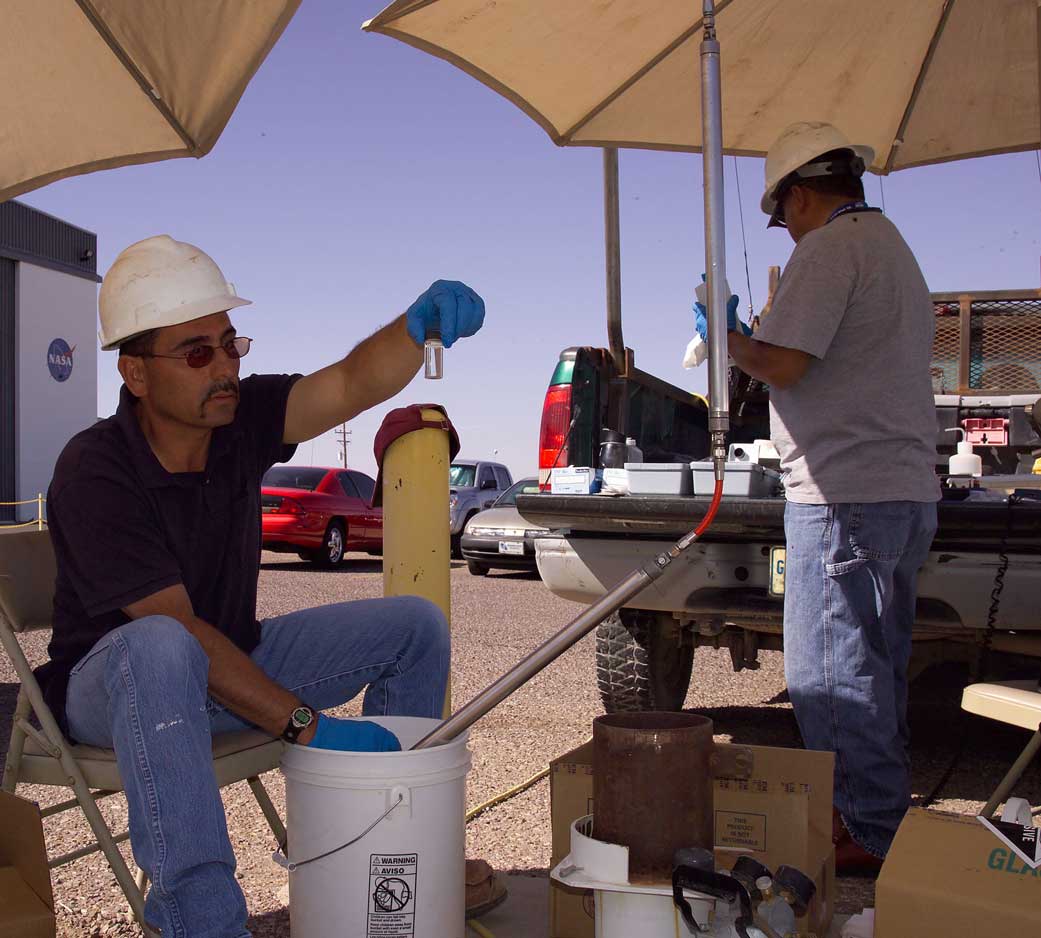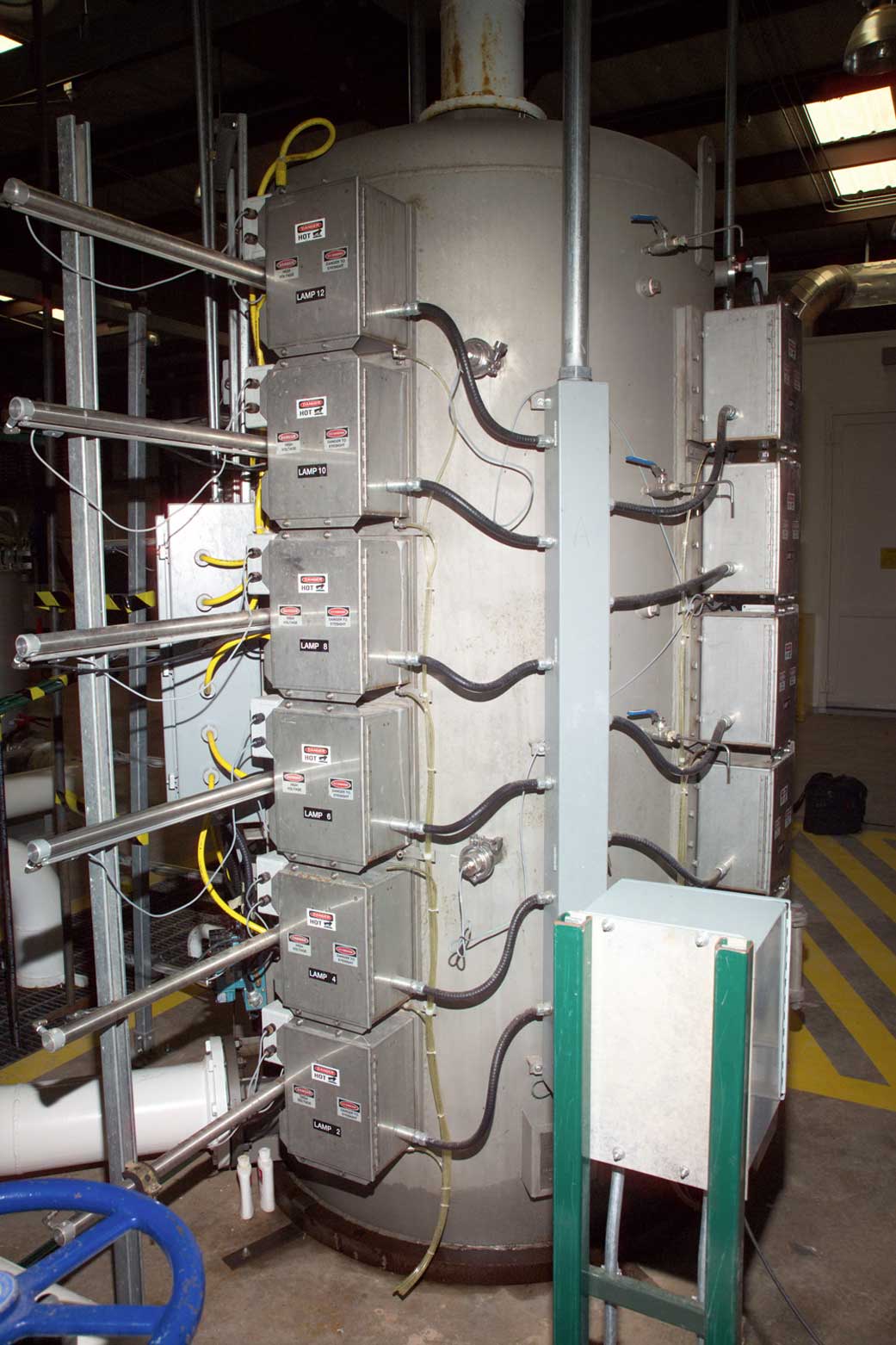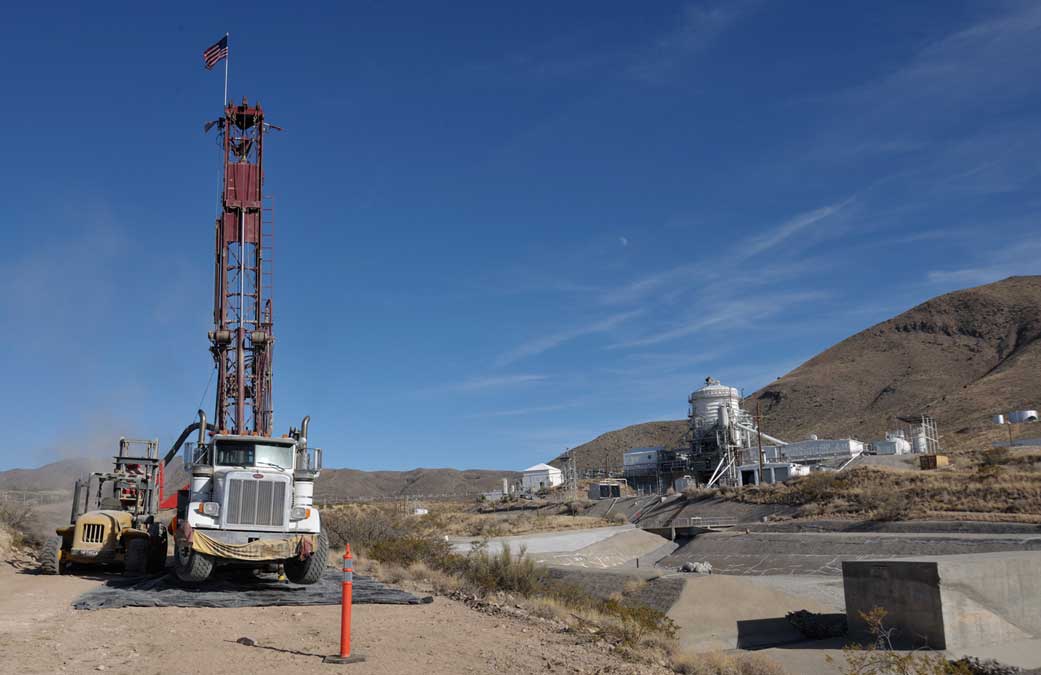NASA performs a variety of environmental investigations at White Sands Test Facility to determine the impact of historic releases of chemical wastes on our environment. Prior to the current Hazardous Waste Permit issued by the New Mexico Environmental Department (NMED), we performed an assortment of environmental activities, including the
- Installation and use of a comprehensive groundwater monitoring network,
- Installation and operation of two large-scale groundwater pump and treat systems,
- Development and submittal of a wide variety of environmental plans and reports, including an all-inclusive Resource Conservation and Recovery Act (RCRA) Facility Investigation and Corrective Measures Study (RFI/CMS) report in 1996, and
- Identification of several locations at White Sands Test Facility that required further investigation and potential mitigation.
The current RCRA permit is in effect since 2009. The permit lists more than 40 Solid Waste Management Units & Areas of Concern requiring corrective action.
By routinely collecting and evaluating environmental data, we recognized there were environmental issues caused by historical operations at White Sands Test Facility. From the 1960s to the 1980s, testing and hardware cleaning operations used the best available waste handling techniques for that time. However, hazardous constituents were released to the environment at multiple sites at our facility. NASA worked with the NMED to develop a comprehensive long-range plan to address these historic releases. NASA continues to actively investigate the impact of historic releases and recent activities have included the following:
- Soil and groundwater investigations,
- Soil gas and groundwater monitoring well installations,
- Soil, soil gas, and groundwater monitoring,
- Seismic surveys,
- Hydrogeologic interpretation field work,
- Remediation system design and operation, and
- Remediation technology evaluation.
Restoration
Groundwater Treatment
Historic releases of hazardous constituents during the 1960 to 1980 timeframe resulted in a contaminated groundwater plume that extends about 2 1/2 miles west of the White Sands Test Facility industrial area. The primary groundwater contaminants include the volatile organic chemicals trichloroethene (TCE), tetrachloroethene (PCE), Freon 11, and Freon 113 as well as the semi-volatile compound N-nitrosodimethylamine (NDMA). A groundwater treatment system is in operation at the leading edge of the contaminant plume to ensure that the contamination is not allowed to migrate further to the west or south. This pump and treat remediation system is designed to treat approximately 1,076 gallons per minute pumping contaminated water from the aquifer, treating it to eliminate the contaminants, and then injecting the water back into the aquifer. An additional groundwater treatment system was installed in the Mid-plume area to intercept groundwater contamination closer to the source areas before it enters the main contaminant plume. The system is designed to treat flows between 20 and 125 gallons per minute.
Post-closure Care
White Sands Test Facility provides post-closure care for five hazardous waste management units that have been closed. Post-closure care activities include extensive groundwater monitoring, analytical procedures, inspections, maintenance, and routine reporting. Additionally, closure investigations have been performed or are ongoing at each area to determine if there are any residual hazardous constituents present that may present a source of future contamination.
Post-closure Care – Landfill
NASA operated a solid waste landfill at White Sands from 1965 to 1998. The landfill was 24 acres in size with 26 individual cells, each holding an estimated 3,000 cubic yards of solid waste. The total waste volume is estimated to be 78,000 cubic yards. Solid wastes consisting primarily of cardboard, office, shop, and non-hazardous lab wastes, construction and demolition debris, and waste generated by a central cafeteria were disposed of at the landfill. Closure activities included the installation of a geosynthetic clay liner and cover, grading for proper drainage, and native seeding for re-vegetation of the site. NASA currently monitors groundwater and methane at the site to determine if releases to the environment have occurred. Inspections are conducted quarterly for cover integrity, erosion, vegetative cover, and fence integrity. A more comprehensive environmental investigation of the landfill is required by the Permit and is scheduled for the 2018-2019 timeframe.































